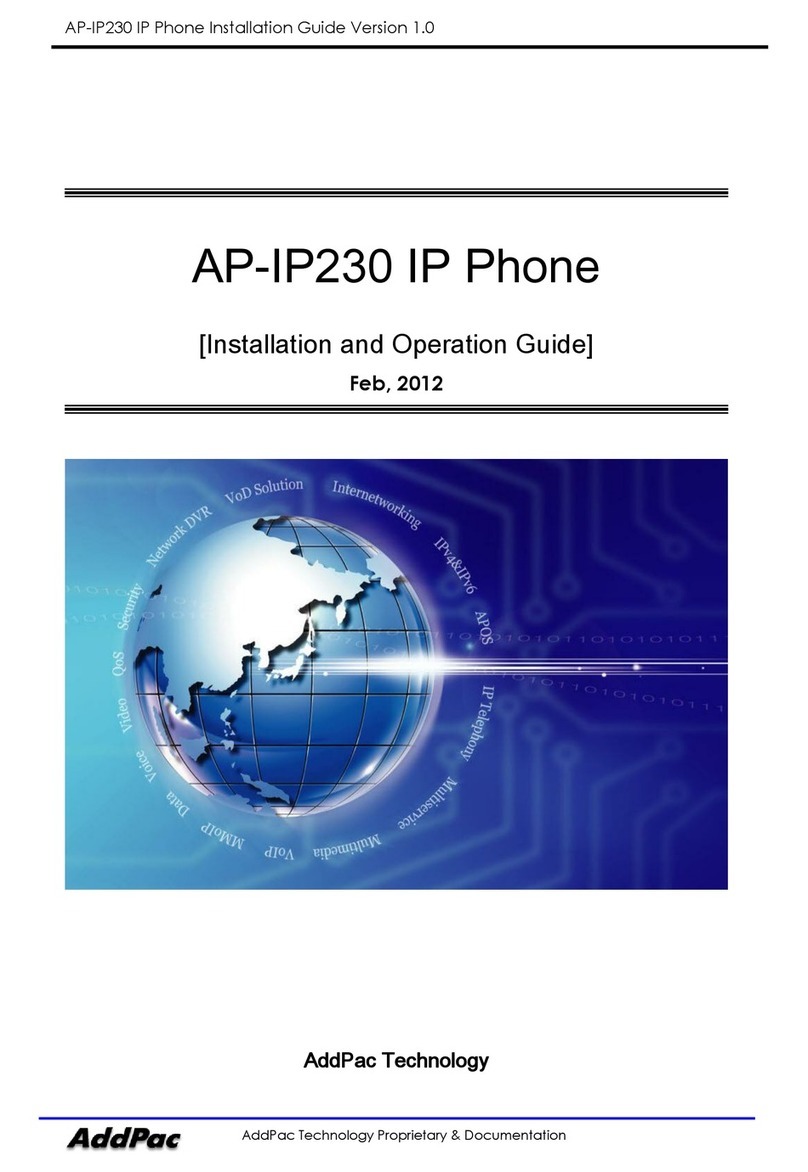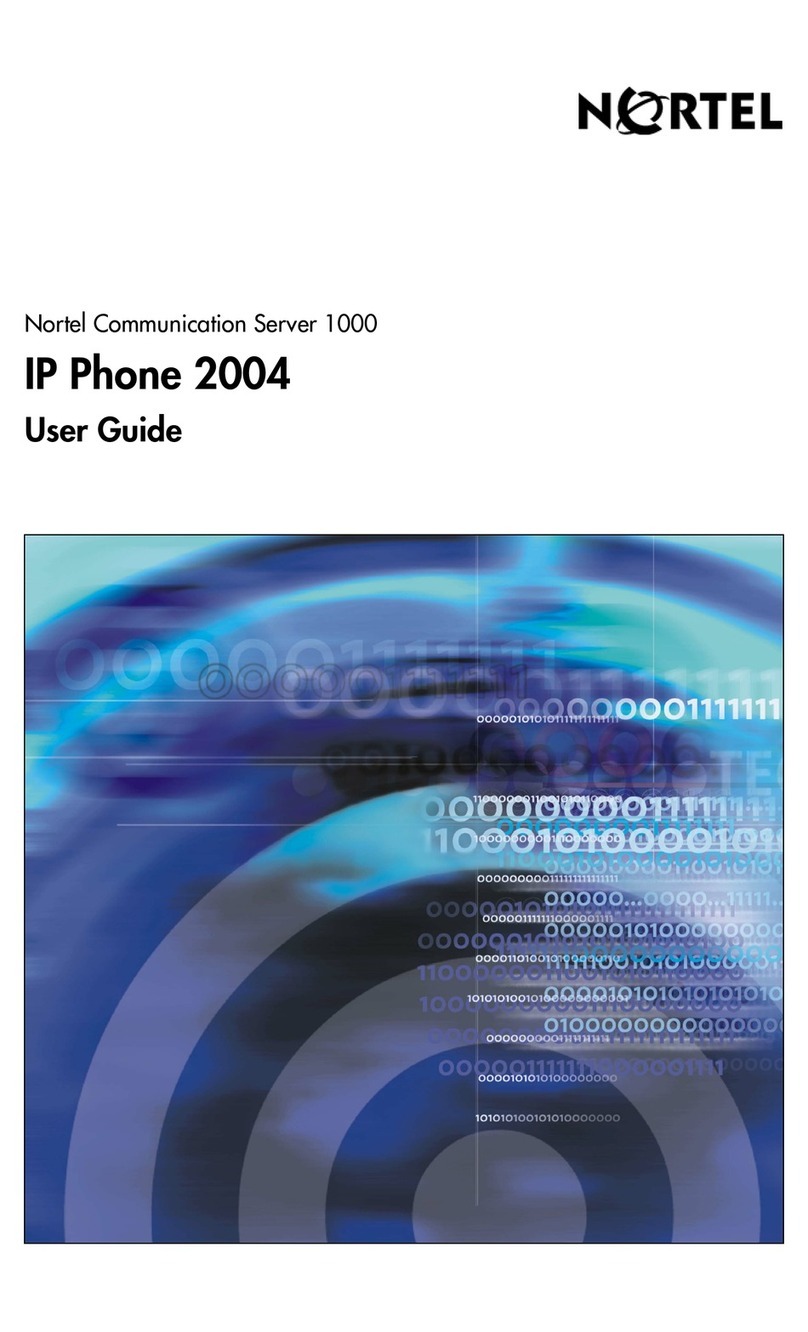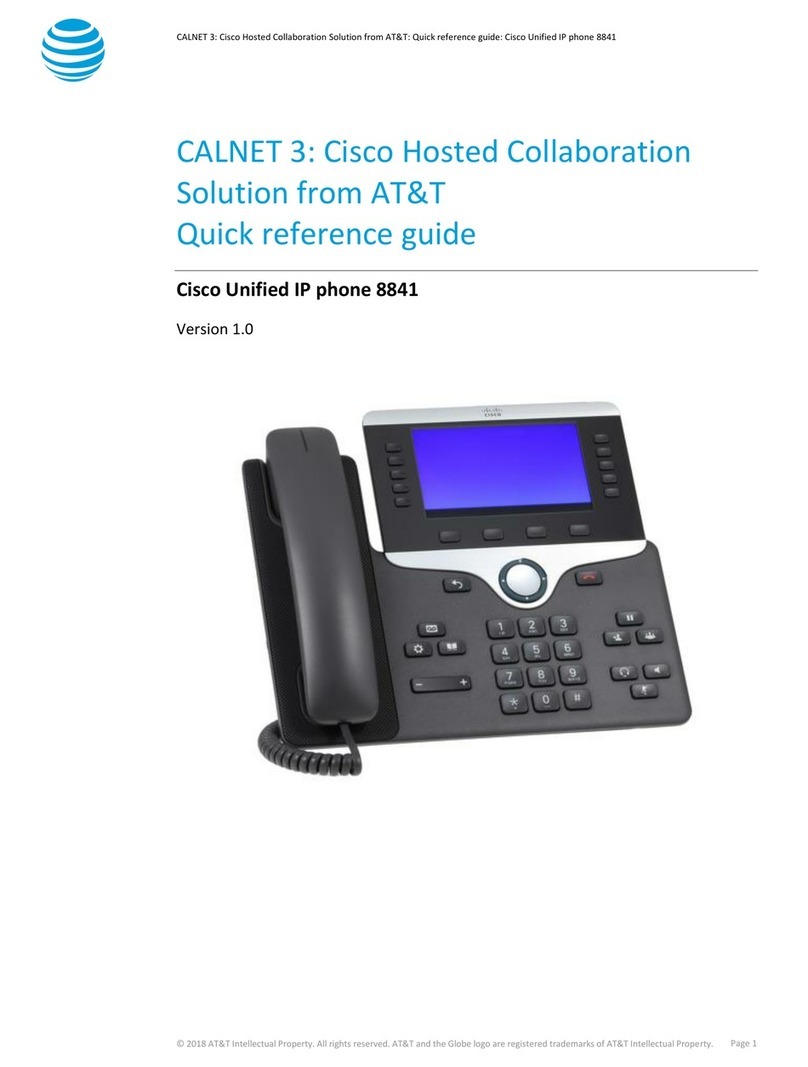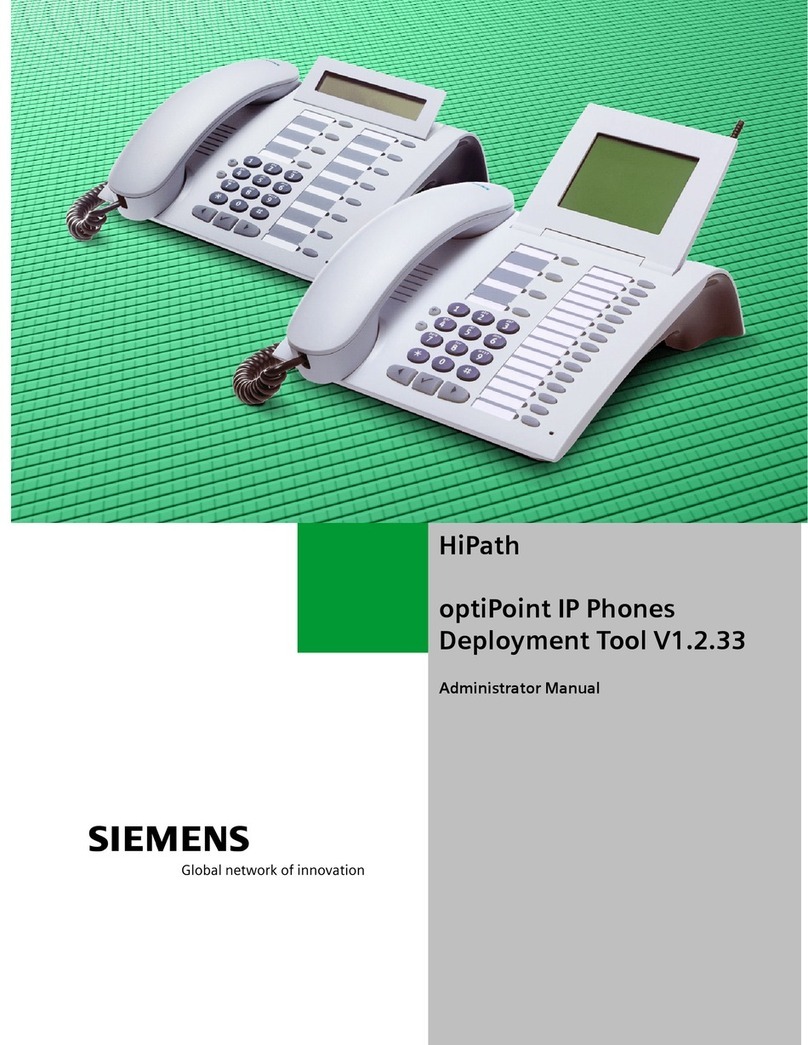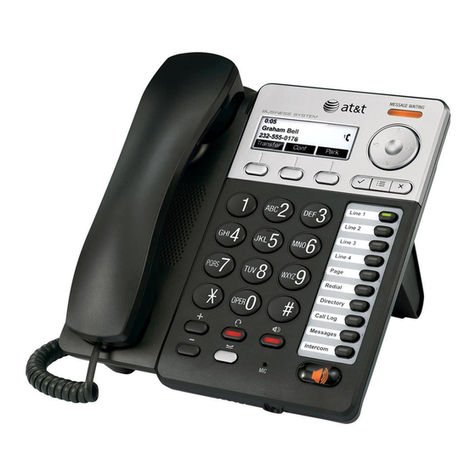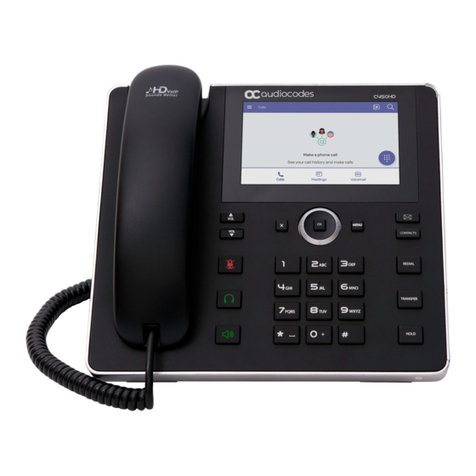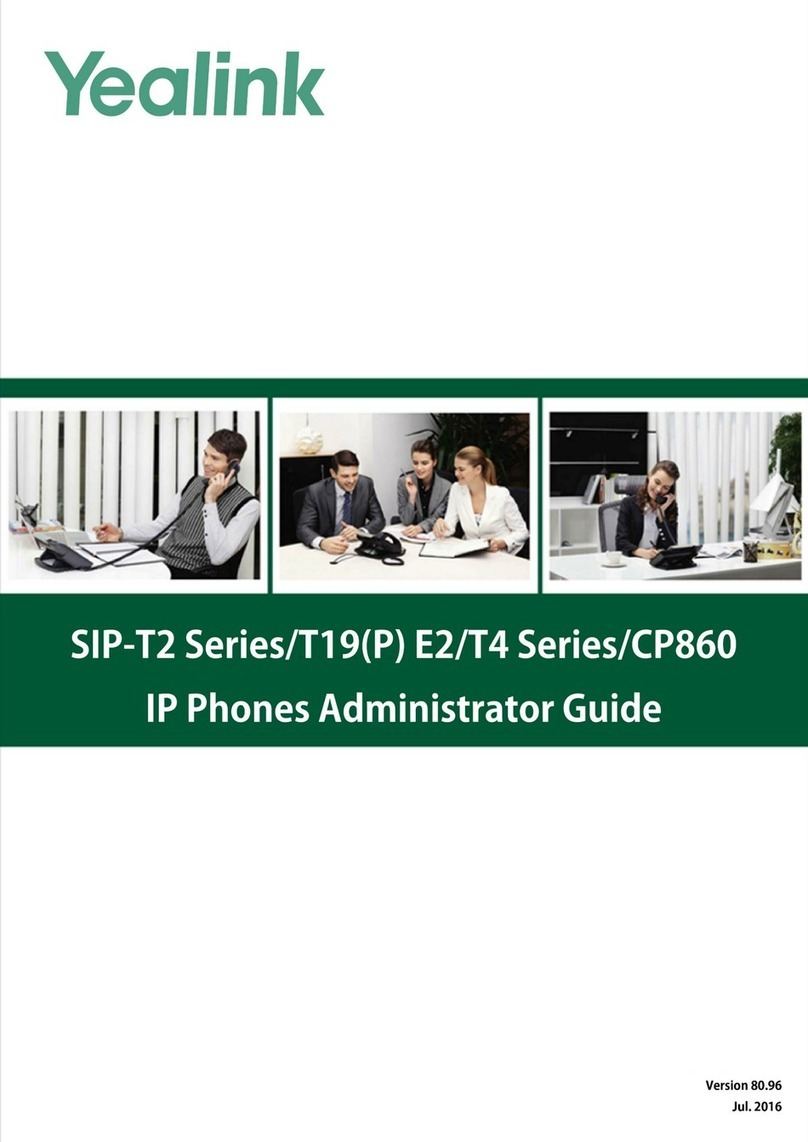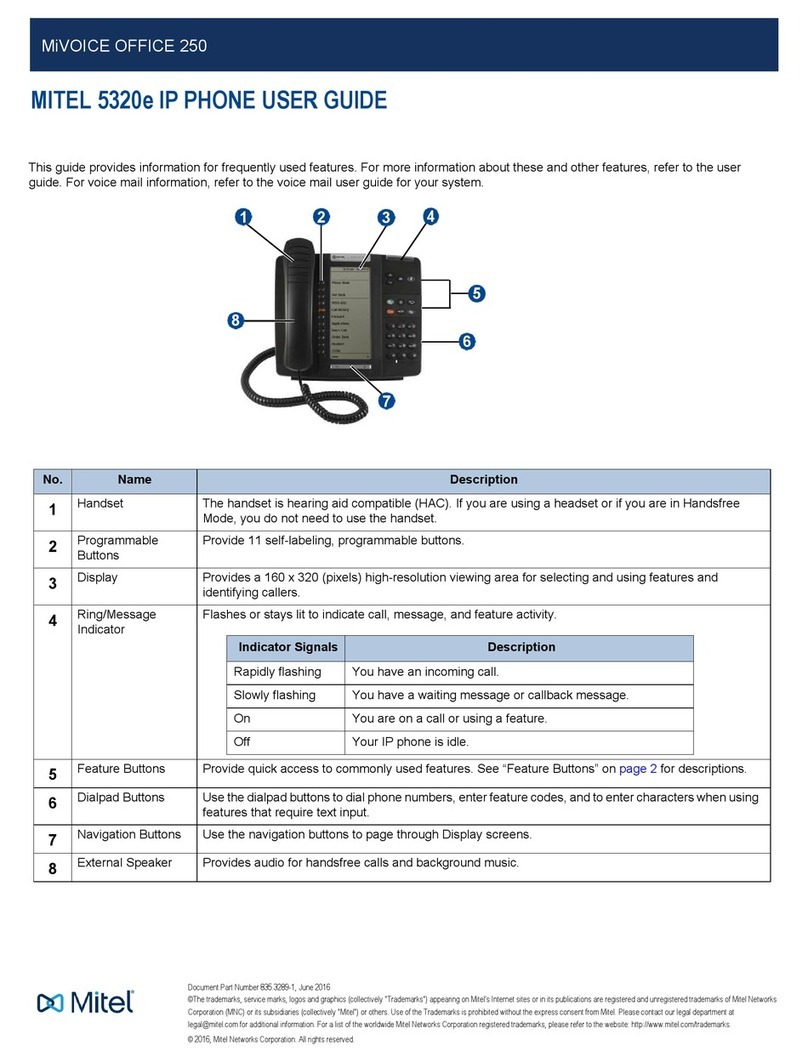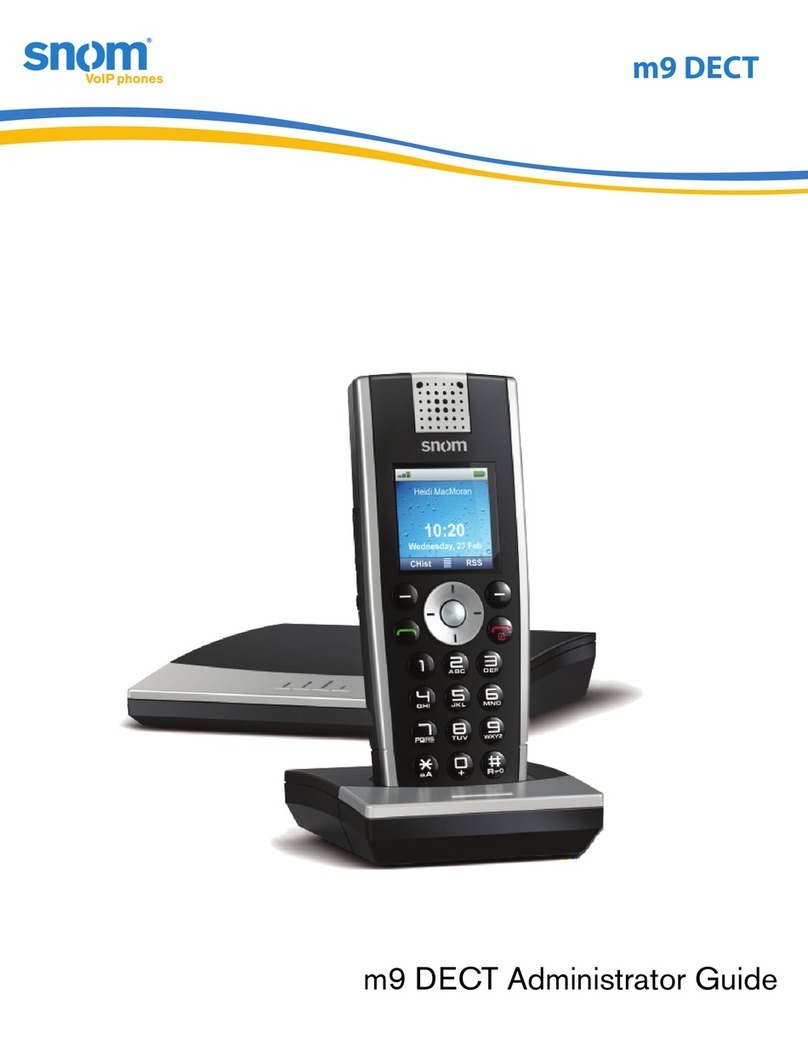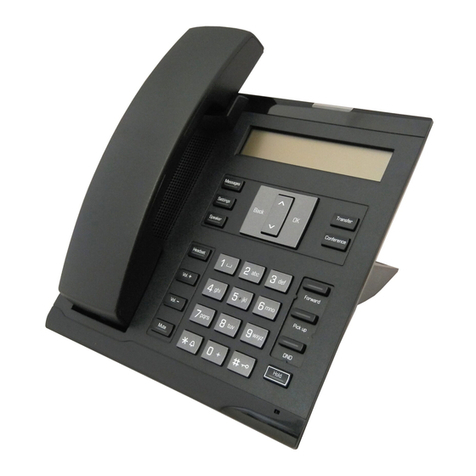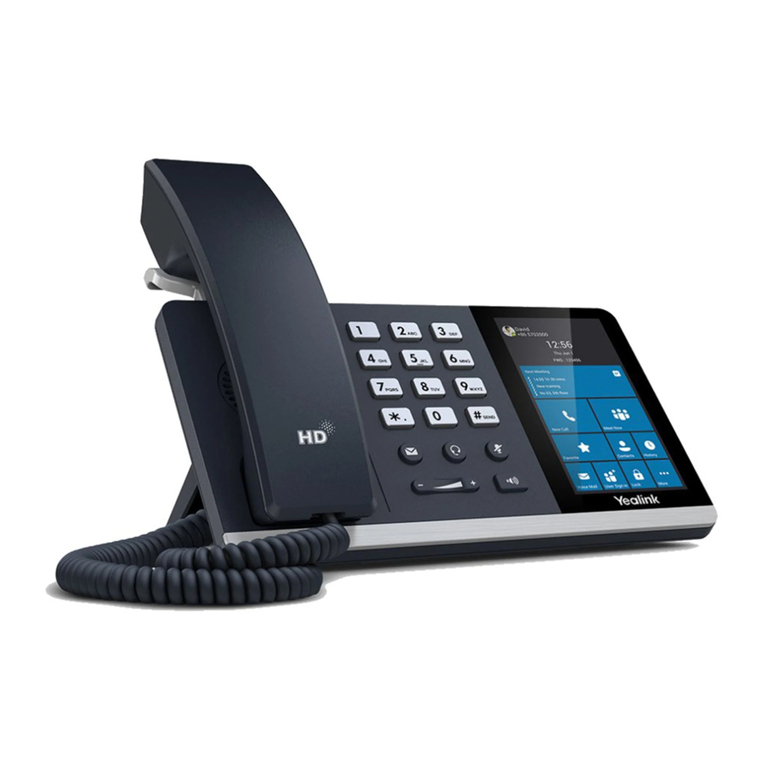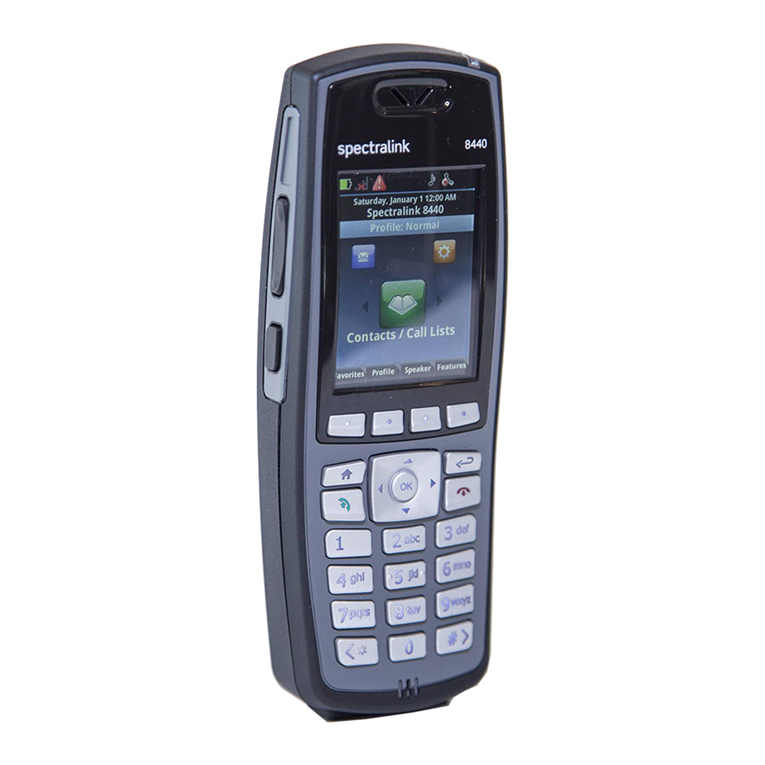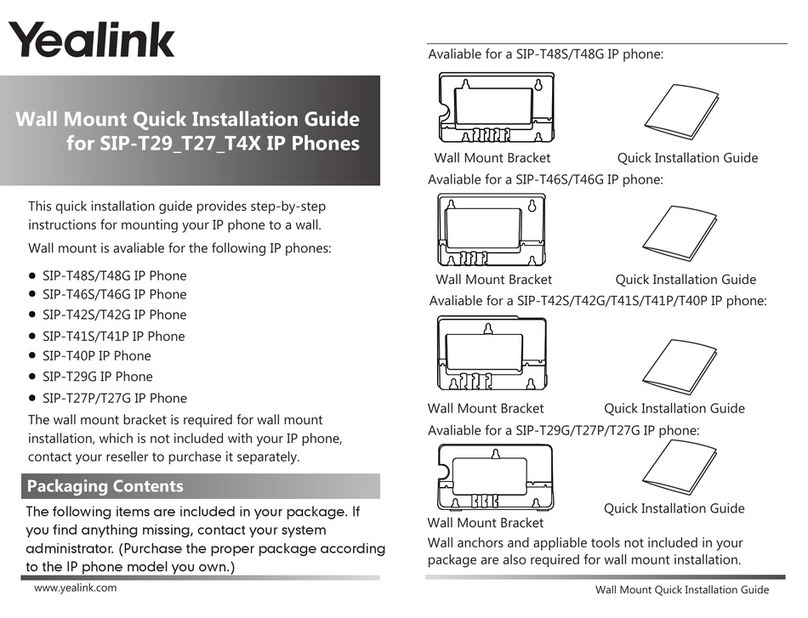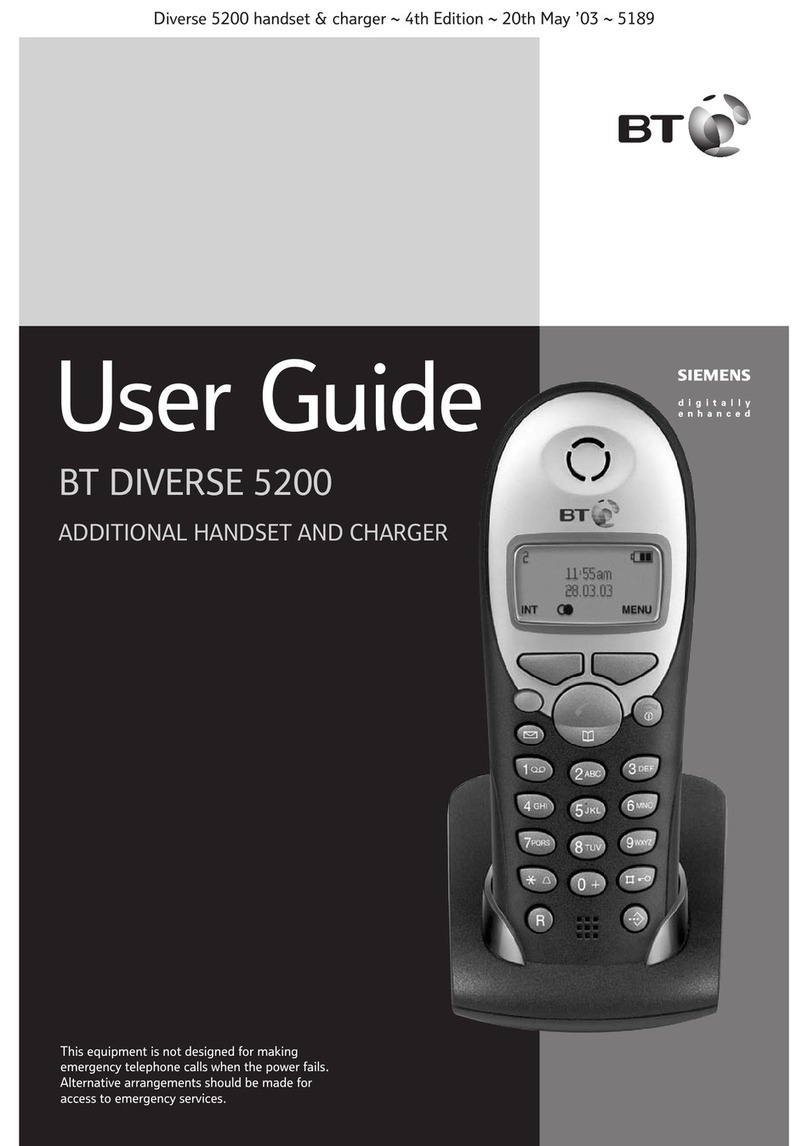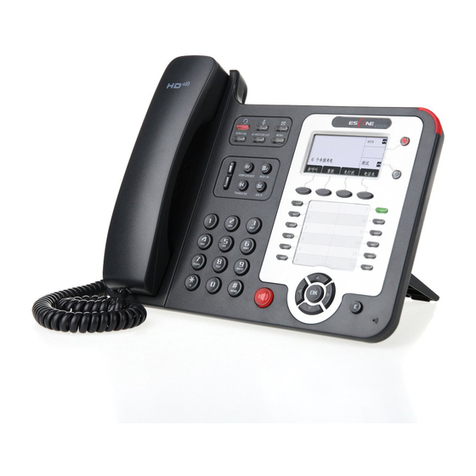AddPac AP-IP300 Operating instructions

AP-IP300 IP Phone Installation Guide Version 1.0
AddPac Technology Proprietary & Documentation
AP-IP300 IP Phone
[Installation and Operation Guide]
November, 2007
AddPac Technology
www.addpac.com

AP-IP300 IP Phone Installation Guide Version 1.0
AddPac Technology Proprietary & Documentation
2
AP-IP300 IP Phone
Note.
The specifications and information in this guide are subject to change without notice. All statements, information, and
recommendations in this guide are believed to be accurate but are presented without warranty of any kind, express or
implied. In no event shall AddPac or its suppliers disclaim all warranties, expressed or implied, including, without limitation,
lost profits or loss or damage to data arising out of the use or inability to use this guide. For detail specification, information
or sales and warranty, please contact to AddPac Technical Sales division.

AP-IP300 IP Phone Installation Guide Version 1.0
AddPac Technology Proprietary & Documentation
3
[Contents]
Getting into AP-IP100 IP Phone Installation Guide .......................................................... 11
Chapter 1. Introduction ................................ 13
Introduction ......................................................................................................................... 13
Product Overview ...............................................................................................................13
AP-IP300 IP Phone Hardware Specification ..................................................................... 16
AP-IP300 IP Phone Software Specification.......................................................................17
The Upper View ...................................................................................................................19
The Layout of the Rear Side ..............................................................................................21
Chapter 2. Preparing for Installation .............. 22
Installation Requirement .................................................................................................... 22
Electrical Requirement ....................................................................................................... 22
General Requirement.......................................................................................................... 23
Unpacking and Verifying the Contents ............................................................................. 25
Chapter 3. Installation.................................... 26
Structural Diagram of User Interface Menu...................................................................... 30
Using the Dial Pad Buttons................................................................................................32
Using Send/End Button......................................................................................................34
Using Softkeys Supported by SSCP ................................................................................. 35
Basic CLI Command for Network Setup ...........................................................................39
Chapter 4. Using AP-IP300 ........................... 41
Default Screen.....................................................................................................................41
Phone Book Menu............................................................................................................... 43
Phonebook – Searching a Phone Number .......................................................................44
Phonebook – Registration .................................................................................................47
Phonebook- Contact Group ...............................................................................................51
Phonebook – Button List ...................................................................................................53
Phonebook – Recent Call...................................................................................................55
Phonebook – Button Profile............................................................................................... 57
Phonebook – Initialize PB .................................................................................................. 59
Tool Box Menu ....................................................................................................................60
Tool Box – Date & Time ......................................................................................................61
Tool Box – Save All .............................................................................................................63

AP-IP300 IP Phone Installation Guide Version 1.0
AddPac Technology Proprietary & Documentation
4
Tool Box – Factory Default.................................................................................................64
Tool Box – Ring ................................................................................................................... 65
Tool Box – Power Save....................................................................................................... 67
Tool Box – Version Information ......................................................................................... 68
Tool Box – Language ..........................................................................................................69
Tool Box – Password..........................................................................................................70
AV Setup Menu .................................................................................................................... 72
AV Setup – Volume..............................................................................................................73
AV Setup – Audio Codec ....................................................................................................75
Network & Call – Internet Setup ........................................................................................77
Network & Call – Internet Setup – IP Static IP .................................................................. 79
Network & Call – Internet Setup – PPPoE.........................................................................80
Network & Call – Internet Setup – Static IPv6 ..................................................................81
Network & Call – Internet Setup – IPv6 EUI-64................................................................. 82
Network & Call – LAN Setup .............................................................................................. 83
Network & Call – Network Status.......................................................................................85
Network & Call – VoIP Setup.............................................................................................. 88
Network & Call – VoIP Setup - VoIP Signaling.................................................................. 89
Network & Call – VoIP Setup - VoIP Signaling- SIP Protocol ..........................................90
Network & Call – VoIP Setup - VoIP Signaling - H.323 Protocol...................................... 91
Network and Call – VoIP Setup – QoS...............................................................................92
Network and Call – VoIP Setup – SIP Options..................................................................93
Network & Call – VoIP Setup– PSTN Prefix ......................................................................95
Network & Call – Additional Service ................................................................................. 96
Network & Call – Additional Service – Call Forward........................................................ 97
Network & Call – Additional Service – DND(Do Not Disturb).......................................... 99
Network & Call – Additional Service – Call Wait Setup .................................................101
Network & Call – Additional Service – Auto Response .................................................102
Network & Call – Additional Service – Multi Number ....................................................103
Network & Call – Additional Service – Service Port ......................................................104
Network & Call – Additional Service – Auto Upgrade.................................................... 106
Network & Call – Additional Service – SSCP Setup....................................................... 108
Network & Call – Presence............................................................................................... 110
Network & Call – Presence – Presence........................................................................... 111
Network & Call – Presence – Presence Server .............................................................. 112
Application – Voice Mail ................................................................................................... 114
Application – Conference................................................................................................. 116
Application – SMS............................................................................................................. 118
Application – Application Setup ...................................................................................... 120

AP-IP300 IP Phone Installation Guide Version 1.0
AddPac Technology Proprietary & Documentation
5
Application - Application – Remote Broadcast .............................................................. 122
Application - Application Setup – Chime Setup.............................................................123
Application - Application Setup – Client Info Setup ...................................................... 124
Application – Client Info...................................................................................................125
Application – Remote Broadcast..................................................................................... 126
System Setup Menu.......................................................................................................... 127
System Setup – User Information ...................................................................................128
System Setup – Speed Dial Setup ................................................................................... 130
System Setup – Start menu.............................................................................................. 131
Chapter 5. Testing Operation....................... 132
Booting Procedure and Operating Bases....................................................................... 132
Using APOS Commands .................................................................................................. 137
Configuring Password...................................................................................................... 141
Configuring Host Name....................................................................................................141
User Administration.......................................................................................................... 141
Chapter 6. Emergency Recovery ................ 146
Entering the Boot Loader mode ...................................................................................... 147
Initialize APOS Settings.................................................................................................... 148
Downloading APOS Image File in Boot Loader Mode ................................................... 149
Chapter 7. Appendix.................................... 150

AP-IP300 IP Phone Installation Guide Version 1.0
AddPac Technology Proprietary & Documentation
6
[Figures]
(Figure 1-1) Network Diagram of AP-IP300 IP Phone 15
(Figure 1-2) The Upper View for the Key Arrangement of AP-IP300 19
(Figure 1-3) The Rear Side 21
(Figure 3-1) Connecting WAN Interface 26
(Figure 3-2) Connecting LAN Interface 27
(Figure 3-3) AP-IP300 IP Phone PSTN Interface Connection 28
(Figure 3-4) External Audio IN/OUT Interface Diagram of AP-IP300 IP Phone 29
(Figure 3-5) Structural Diagram of UI Menu 31
(Figure 3-6) Dial Pad Buttons 32
(Figure 3-7) Layout of Softkeys 35
(Figure 4-1) Default Screen 41
(Figure 4-2) Basic Screen Layout 42
(Figure 4-3) Main Screen 43
(Figure 4-4) Phonebook Menu Screen 43
(Figure 4-5) Search Menu Screen in the Phonebook 44
(Figure 4-6) When OK is pressed on the dial pad (it searches all the number which have
been saved previously) 45
(Figure 4-7) when F1 (modify) is pressed 46
(Figure 4-8) Registration Menu Screen in the Phonebook 47
(Figure 4-9) Advanced Registration Setup Screen 49
(Figure 4-10) Advanced Setup for Registration Screen 49
(Figure 4-11) Contact Group 51
(Figure 4-12) When the softkey of Add Group or Modify Group (when the existing group
presents) is pressed 52
(Figure 4-13) Button List Screen 53
(Figure 4-14) Editing Screen in the Button List 54
(Figure 4-15) Recent Call Screen 55
(Figure 4-16) Button Profile Menu Screen 57
(Figure 4-17) Initialize PB Menu Screen 59
(Figure 4-18) Main Screen 60
(Figure 4-19) Too Box Menu Screen 60
(Figure 4-20) Date & Time Menu Screen 61
(Figure 4-21) Save All Menu Screen 63
(Figure 4-22) Factory Default Menu Screen 64
(Figure 4-23) Ring Screen 66
(Figure 4-24) Power Save Menu Screen 67

AP-IP300 IP Phone Installation Guide Version 1.0
AddPac Technology Proprietary & Documentation
7
(Figure 4-25) Information Menu Screen 68
(Figure 4-26) Language Menu Screen 69
(Figure 4-27) Password Menu Screen 71
(Figure 4-28) Main Menu 72
(Figure 4-29) AV Setup Menu Screen 72
(Figure 4-30) Volume Setup Menu Screen 73
(Figure 4-31) Audio Codec Menu Screen 75
(Figure 4-32) Main Screen 76
(Figure 4-33) Network & Call Menu Screen 76
(Figure 4-34) Internet Setup Menu Screen 78
(Figure 4-35) Static IP Menu Screen 79
(Figure 4-36) PPPoE Menu Screen 80
(Figure 4-37)Static IPv6 Menu Screen 81
(Figure 4-38) IPv6 EUI-64 Menu Screen 82
(Figure 4-39) LAN Setup Menu Screen 84
(Figure 4-40) Network Status Menu Screen 86
(Figure 4-41) VoIP Setup Menu Screen 88
(Figure 4-42) VoIP Signaling Setup Menu Screen 89
(Figure 4-43) SIP Protocol Menu Screen 90
(Figure 4-44) H.323 Protocol Menu Screen 91
(Figure 4-45) QoS Screen 92
(Figure 4-46) SIP Options Menu Screen 93
(Figure 4-47) PSTN Prefix Menu 95
(Figure 4-48) Additional Service Menu Screen 96
(Figure 4-49) Call Forward Menu Screen 97
(Figure 4-50) DND Menu Screen 99
(Figure 4-51) DND Menu Screen 100
(Figure 4-52) Call Wait Setup Menu Screen 101
(Figure 4-53) Auto Response Menu Screen 102
(Figure 4-54) Multi Number Menu Screen 103
(Figure 4-55) Service Port Menu Screen 104
(Figure 4-56) Auto Upgrade Menu Screen 106
(Figure 4-57) SSCP Setup Menu Screen 109
(Figure 4-58) Presence Menu Screen 110
(Figure 4-59) Presence Setup Menu Screen 111
(Figure 4-60) Presence Server Menu Screen 112
(Figure 4-61) Main Screen 113
(Figure 4-62) Application Menu Screen 113
(Figure 4-63) Voice Mail Menu Screen 114

AP-IP300 IP Phone Installation Guide Version 1.0
AddPac Technology Proprietary & Documentation
8
(Figure 4-64) Saved Voice Message Screen 115
(Figure 4-65) Conference Room Menu Screen 116
(Figure 4-66) SMS Menu Screen 118
(Figure 4-67) Application Setup Menu Screen 120
(Figure 4-68) Remote Broadcast Menu Screen 122
(Figure 4-69) Remote Broadcast Menu Screen 123
(Figure 4-70) Client Info Setup Menu Screen 124
(Figure 4-71) Client Info Menu Screen 125
(Figure 4-72) Remote Broadcast Screen 126
(Figure 4-73) Main Screen 127
(Figure 4-74) System Setup Menu Screen 127
(Figure 4-75) User Information Menu Screen 128
(Figure 4-76) Speed Dial Setup Menu Screen 130
(Figure 4-77) Start Menu Screen 131
(Figure 5-1) Terminal Emulator HyperTerminal of MS-Windows 133
(Figure 5-2) Entering the name of the connection in HyperTerminal 134
(Figure 5-3) Access to Telnet by Using TCP/IP 135
(Figure 5-4) Login Screen 136
Figure 7-1 100Base-TX RJ-45 Connector 151

AP-IP300 IP Phone Installation Guide Version 1.0
AddPac Technology Proprietary & Documentation
9
[Tables]
[Table 1-1] List of Hardware Specification ............................................................................. 16
[Table 1-2] AP-IP300 Software Specification.........................................................................17
[Table 1-3] Description of the Button Features on the Front Side .........................................20
[ 1-4] Description of the Interfaces on the Rear Side ............................................................ 21
[Table 2-1] The contents of AP-IP300 IP Phone in the Package Box .................................... 25
[Table 3-1] The Characters Associated with the Dial Pad Buttons ........................................32
[Table 3-2] Using the Call Button on the Dial Pad .................................................................34
[Table 3-3] Using End Button ................................................................................................34
[Table 3-4] When the Phone is on the Hook..........................................................................35
[Table 3-5] When the Phone is off the Hook..........................................................................35
[Table 3-6] When You are Busy on Line ................................................................................ 36
[Table 3-7] While a Call is Placed on Hold ............................................................................36
[Take 3-8] When the Phone Rings ........................................................................................37
[Table 3-9] When the Phone Rings .......................................................................................37
[Table 3-10] On Voice Mail Screen........................................................................................ 37
[Table 3-11] While a Call is Being Transferred ......................................................................37
[Table 3-12] Conferencing ..................................................................................................... 37
[Table 3-13] Conference Conference Host............................................................................37
[Table 3-14] Conference Participants ....................................................................................38
[Table 4-1] Description of the Default Screen........................................................................41
[Table 4-2] Description of Search Menu Screen in the Phonebook.......................................45
[Table 4-3] Description of Registration Menu Screen in the Phonebook ............................... 48
[Table 4-4] Description of Advanced Setup for Registration Screen......................................49
[Table 4-5] Edit Group ...........................................................................................................52
[Table 4-6] Description of the Editing Screen in the Button List ............................................54
[Table 4-7] Description of the Recent Call Screen ................................................................56
[Table 4-8] Description of Button Profile Menu Screen..........................................................58
[Table 4-9] Description of Date & Time Menu Screen ...........................................................62
[Table 4-10] Description of Ring Screen................................................................................66
[Table 4-11] Description of Information Menu Screen ...........................................................68
[Table 4-12] Description of Language Menu Screen .............................................................69
[Table 4-13] Description of the Password Menu Screen .......................................................71
[Table 4-14] Description of Volume Setup Screen.................................................................74
[Table 4-15] Description of Internet Setup Menu Screen.......................................................78
[Table 4-16] Description of Static IP Menu Screen ................................................................79

AP-IP300 IP Phone Installation Guide Version 1.0
AddPac Technology Proprietary & Documentation
10
[Table 4-17] Description of PPPPoE Menu Screen ............................................................... 80
[Table 4-18] Description of Static IPv6 Menu Screen ............................................................81
[Table 4-19] Description of IPv6 EUI-64 Menu Screen..........................................................82
[Table 4-20] Description of LAN Setup Menu Screen............................................................84
[Table 4-21] Description of the Network Status Menu Screen ...............................................87
[Table 4-22] Description of VoIP Signaling Setup Menu Screen ...........................................89
[Table 4-23] Description of SIP Protocol Menu Screen ......................................................... 90
[Table 4-24] Description of H.323 Protocol Menu Screen .....................................................91
[Table 4-25] Description of QoS Screen................................................................................92
[Table 4-26] Description of SIP Options ................................................................................94
[Table 4-27] Description of PSTN Prefix Menu......................................................................95
[Table 4-28] Description of Call Forward Menu Screen.........................................................98
[Table 4-29] Description of DND Menu Screen ...................................................................100
[Table 4-30] Description of Call Wait Setup Menu Screen ..................................................101
[Table 4-31] Description of Auto Response Menu Screen...................................................102
[Table 4-32] Description of the Multi Number Menu Screen................................................103
[Table 4-33] Description of Service Port Menu Screen........................................................105
[Table 4-34] Description of Auto Upgrade Menu Screen ..................................................... 107
[Table 4-35] Description of SSCP Setup Screen ................................................................. 109
[Table 4-36] Description of Presence Setup Menu Screen.................................................. 111
[Table 4-37] Description of Presence Server Menu Screen ................................................ 112
[Table 4-38] Description of Voice Mail Menu Screen........................................................... 114
[Table 4-39] Description of the Conference Room Menu Screen ........................................ 117
[Table 4-40] Description of SMS Menu Screen ................................................................... 119
[Table 4-41] Description of Application Setup Menu Screen ............................................... 120
[Table 4-42] Description of Remote Broadcast Menu Screen .............................................122
[Table 4-43] Description of Remote Broadcast Menu Screen .............................................123
[Table 4-44] Description of Client Info Setup Menu Screen.................................................124
[Table 4-45] Description of User Information Menu Screen.................................................129
[Table 4-46] Description of Speed Dial Setup Menu Screen ............................................... 130
[Table 4-47] Description of Start Menu Screen....................................................................131
[Table 5-1] Commands for the General User Mode............................................................. 138
[Table 5-2] anagement Mode Commands ........................................................................... 139
[Table 5-3] Password Setup ................................................................................................141
[Table 5-4] Configuring Host Name ..................................................................................... 141
[Table 5-5] User Administration ...........................................................................................141
[Table 5-6] Configuring FXS/FXO Port ................................................................................ 143
[Table 7-1] The signal and Pinout specification...................................................................150
[Table 7-2] Signal and Pinout of Direct Ethernet Cable.......................................................151

AP-IP300 IP Phone Installation Guide Version 1.0
AddPac Technology Proprietary & Documentation
Getting into AP-IP100 IP Phone Installation Guide
This chapter explains the AP-IP300 IP phone installation guide.
[Contents of AP-IP300 Installation Guide]
The purpose of this guide is to assist the users to install the AP-IP200 IP Phone easily. This guide is
composed of six chapters as to follow.
If you have a previous experience of using IP Phone, please refer to the chapters the user wants to
know directly. But, if you have no experience of using IP Phone, it is highly recommended to
thoroughly understand the manual before operation of this IP Phone.
zChapter 1 『Overview』provides an introduction to the hardware and software features of
AP-IP300 and technical specification.
zChapter 2 『Preparing for Installation』explains the installation environment and cable
requirements along with recommendations for safe operation of the equipment.
zChapter 3 『Installing』This chapter explains the procedures for installing the
gateway. Installation involves the tasks of connecting cables, console to AP-IP100 IP
Phone and other basic information for the installation process.
zChapter 4 『How to Use AP-IP300』describes the UI operation of AP-IP300.
「UI stands for ‘User Interface’, allows the user to change device settings through
the screen.」
zChapter 5 『Appendix』provides the detailed cable specifications for AP-IP300 IP
phone.

AP-IP300 IP Phone Installation Guide Version 1.0
AddPac Technology Proprietary & Documentation
12
If you have any questions and need any technical support of AP-IP300, please contact AddPac
Technology in the followings:
AddPac Technology Co., Ltd.
2nd Fl. Jeong-Am Building, 769-12
Yeoksam-Dong, Kangnam-Ku, Seoul , Korea
Phone (02) 568-3848
Fax (02) 568-3847
E-mail : info@addpac.com
http://www.addpac.com
The revision history of AP-IP300 IP Phone installation guide is listed as to follow:
Revision History of AP-IP300 IP Phone Installation Guide
Revision No. Date Contents Written By
Version 1.00 July 25th, 2005 Initial Release AddPac
R&D Center

AP-IP300 IP Phone Installation Guide Version 1.0
AddPac Technology Proprietary & Documentation
13
Chapter 1. Introduction
Introduction
AP-IP300 IP phone is designed to provide enhanced IP telephony functionality to meet the wide range of
business user requirements. This IP telephone optimally delivers rich featured voice telephony service on
ordinary internet infrastructure as well asAddPac IP-PBX environment on local LAN as a fully featured IP
extension for the complete AddPac VoIP solution.
Product Overview
1. Emerging in a New Era of IP Communications
This new and versatile IP telephone brings the integrated solution for the IP based voice communication and the
broadcasting feature to maximize business potentials. It provides the advanced IP telephony device features
such as large LCD screen display with high resolution and color graphics, wide variety of feature keys,
customizable hot-keys, two(2) Ethernet ports, the latest QoS, public IP sharing. It supports not only the major
VoIP signaling protocols such as SIP, H.323, MGCP but also G.711, G.726 voice codec, stereo audio in/out
interfaces for external Headset MIC. Etc..
2. New Paradigm for IP Telephony : Telephony + Broadcasting
AP-IP300 IP telephone combines AddPac's field proven VoIP technology and IP voice broadcasting technology.
AP-IP300 is market-ready IP telephone which provides a full suit of remarkable functionality compared to other
typical IP telephones. Apart from telephony service, it delivers IP voice broadcasting service supporting external
MIC/Line-in, Line-out interface for various input/output devices such as headset, Amp or speaker. In addition, it
provides high quality display with blue color LCD mounted. Since AP-IP300 supports diverse voice codecs
according to bandwidth environment, it can be deployed anywhere on the internet, ensuring optimal voice
quality by leveraging the latest QoS technology. Furthermore, installed along with IPNext500 and IPNext1000
on AddPac's comprehensive IP-PBX system, it not only improves operation offering an wide variety of features
such as Music on Hold, Coloring service, Call Transfer but also provides the easy-to-use, intelligent IP
telephony service enhanced by AddPac's unique PC-based User Agent.
3. Firmware Upgradeable Technology

AP-IP300 IP Phone Installation Guide Version 1.0
AddPac Technology Proprietary & Documentation
14
Designed on programmable high performance RISC CPU and DSP, AP-IP300 is capable of adopting new
capabilities and improvement by downloading firmware from website or with its auto-upgrade option as the
customers' needs grow. Moreover, operators can download the latest protocol or service improvements as well
as update firmware by checking the version and activating the auto-upgrade while AddPac's IP-PBX power
on/booting sequence.
4. Compelling Supplementary Services : Extending Benefit of IP Telephony
AP-IP300 delivers not only fully featured IP telephony services, but also various supplementary services to
users. It features advanced phone directory, voice mail, CID(Caller ID), call transfer on site or at a remote site.
One of its greatest services is IP broadcasting feature which enables AP-IP300 to offer voice broadcasting
service, incorporated with in-house broadcasting system.
5. Seamless Stability and Service Consistency
AP-IP300 features 1-FXO port(optional) equipped avoiding operation failure caused by network error or proxy
server/gatekeeper connection error. It supports both automatic and manual PSTN backup feature to maintain
constant operation.
6. IP telephony with Outstanding Network Service Capability
Not only IP telephony, AP-IP300 is an integrated, feature-rich network equipment delivering routing, NAT/PAT,
DHCP Server/Relay, Public IP sharing, VRRP and QoS. In today's mixed network of xDSL, Cable, FTTH,
Metro Ethernet, Metro ATM, Leased line and dynamic IP environment, not only the ample network service
features, but also high-end QoS (Quality of Service) and security features are requested. Based on two (2)
10/100Mbps Fast Ethernet ports, AP-IP300 offers integrated network and security service of LAN-to-LAN
routing, bridge and NAT/PAT. Moreover, AP-IP300 supports H.323, SIP, MGCP signaling protocols
concurrently. So the customers easily migrate to different service providers' networks utilizing different VoIP
signaling protocols.
6. Privacy and Encryption Features
AP-IP300 brings the network security and service security as well. With the built-in CID (Caller ID Detection)
feature, user is able to know who is calling before he answers and block the incoming call. Moreover, It
supports SRTP protocol by encrypting exposed voice signal to avoid being fragile to hacking or wiretapping
AddPac's various VoIP gateway series, multi service routers and comprehensive family of cutting-edge solutions
have delivered high performance and stability to maximize customer satisfaction throughout the world. They
provide high level of flexibility and scalability for each organization to find the solution that best fits their
application needs and budget. With years of experience and industry-leading technology, AddPac provides AP-
IP300 with which customers can best optimize high performance, market strategy and budget for next-
generation communication solution.

AP-IP300 IP Phone Installation Guide Version 1.0
AddPac Technology Proprietary & Documentation
15
(Figure 1-1) Network Diagram of AP-IP300 IP Phone

AP-IP300 IP Phone Installation Guide Version 1.0
AddPac Technology Proprietary & Documentation
16
AP-IP300 IP Phone Hardware Specification
[Table 1-1] List of Hardware Specification
Category Specification
Model AP-IP300
Product Category IP Phone (Built-in Speaker Phone)
Microprocessor High Performance RISC CPU Architecture
Digit and Key Buttopns 3 x 4 Standard Numeric Buttons, 17 Menu/ Function
Key Speed Dialing Keys, 25 Speed-Dial and
Presence Indication Keys
LCD Display Graphic LCD 4.3” Color LCD
Boot Memory 512Kbyte Flash Memory
Flash Memory 4/8Mbyte
Memory
Main Memory 64Mbyte High Speed SDRAM
Input One(1)-3.5mm Stereo-In Connector for Audio In
Audio Interface Output One(1)-3.5mm Stereo-Out Connector for
external speaker
LAN0 Port One(1) 10/100Mbps Fast Ethernet
Ethernet Interface LAN1 Port One(1) 10/100Mbps Fast Ethernet
Power Requirement Poer External Power VAC 110~220 VAC, 50/60Hz,
15Watt
Hardware Chassis Composite, Material ABS Material/Compact Phone Chassis

AP-IP300 IP Phone Installation Guide Version 1.0
AddPac Technology Proprietary & Documentation
17
AP-IP300 IP Phone Software Specification
[Table 1-2] AP-IP300 Software Specification
Category Specification
LAN Protocol Static and IEEE 802.1Q VLAN Routing, RIP v1/v2, OSPF v2
WAN Protocol Point-to-Point Protocol (PPPoE for ADSL), etc.
Voice Codec
- G.711, G.723.1, G.726, G.729, etc.
H.323, SIP, and MGCP Triple Stack Support
ITU-T H.323 v3 VoIP Protocol with ITU-T H.235 Security Feature
Voice Processing Features Supports
- VAD, DTMF, CNG, G.168 and T.38 FAX Relay
ITU-T H.323 IP300, Gatekeeper Support
Audio Service
&
Signaling Protocol
Enhanced QoS Management Features for Voice Traffics
IP-PBX
Inter-working
SSCP AddPac Proprietary Protocol
IP-PBX
Signaling Protocol
SIP Signaling Protocol between AddPac IP-PBX and IP Phone
Voice Mail Voice Mail with IVR, Voice Mail Notification
Number & Call
Routing
Basic Call, Music on Hold, Blind Transfer, Call Pickup, Consult Call,
Switching Call, Consult Transfer, Call Waiting, Call Waiting Notify, Call
Park, Call Pickup Remote, Hunt Group, Call Swapping, individual Call
Park, Group Call Park, Call Forwarding , Unconditional, Busy, No Answer,
Voice Mail, Etc.
Messenger
Inter-working
MS Window based Smart Messenger Program
Conference AddPac IP-PBX Audio MCU or External MCU Support
Standard SNMP Agent (MIB v2) Support
Traffic Queuing and Frame-Relay Flow Control
Remote Management using Console, Rlogin, Telnet
Network Management
Web based Managements using HTTP Server Interface
Standard & Extended IP Access List
Access Control and Data Protections
Enable/Disable for Specific Protocols
Multi-Level User Account Management
Security Functions
Auto-disconnect for Telnet/Console Sessions

AP-IP300 IP Phone Installation Guide Version 1.0
AddPac Technology Proprietary & Documentation
18
PPP User Authentication Supports
→Password Authentication Protocol(PAP)
→Challenge Handshake Authentication Protocol (CHAP)
System Performance Analysis for Process, CPU, Connection I/F
Configuration Backup & Restore for APOS Managements
Debugging, System Auditing, and Diagnostics Support
System Booting and Auto-rebooting with Watchdog Feature
System Managements with Data Logging
Operation
&
Management
IP Traffic Statistics with Accounting
DHCP Server & Relay Functions
Network Address Translation (NAT) Function
Port Address Translation (PAT) Function
Transparent Bridging (IEEE Standard) Function
→Spanning Tree Bridging Protocol Support
→Remote Bridging Support
→Concurrent Routing and Bridging Support
Cisco Style Command Line Interface(CLI)
Other Scalability
Features
Network time Protocol(NTP) Support

AP-IP300 IP Phone Installation Guide Version 1.0
AddPac Technology Proprietary & Documentation
19
The Upper View
This chapter explains the front part’s DIAL and FUNCTION KEY of AP-IP300 IP Phone. The
external case is made of high degree of solidity ABS. Main key buttons are equipped on front part so
that user can operate all the functions with these buttons.
(Figure 1-2) The Upper View for the Key Arrangement of AP-IP300

AP-IP300 IP Phone Installation Guide Version 1.0
AddPac Technology Proprietary & Documentation
20
The following Table 1-3explains each button feature of AP-IP300 on the front side.
[Table 1-3] Description of the Button Features on the Front Side
No. Button Names Features
(1) Speed Dial Brings out the Speed-Dial Menu
(2) F1~F4 The soft keys which are displayed on the bottom of LCD screen and
can be assigned with each different function such as Phonebook
and Speed-Dial.
(3) INFO Displays the information on the top or bottom bar
(4) 25 Speed Dialing 25 buttons for Speed Dialing and Presence Indication
(5) Numeric Key Used for Dialing and parameter setting in UI
(6) Menu Enter the UI Main Menu
(7) Cancel Move on to upper menu from current UI menu or cancel the current
VoIP call
(8) Call Brings out the list of the recent calls
Press to make a call after dialing
(9) END Ends the present call in progress
(10) Navigation Key, OK Moves the direction in each UI menu
(11) Not used
(12) Not used
(13) Absence Used at Absence Mode
(14) Voice Mail Used at Voice Mail Mode
(15) HDP Call This KEY is used for VoIP call via Headphone Interface
(16) SPK Call The key is used for VoIP call via speaker phone. If this button is
pressed, blue LAMP is turn on.
(17) Privacy Used for MUTE at conversation
Other manuals for AP-IP300
1
Table of contents
Other AddPac IP Phone manuals

